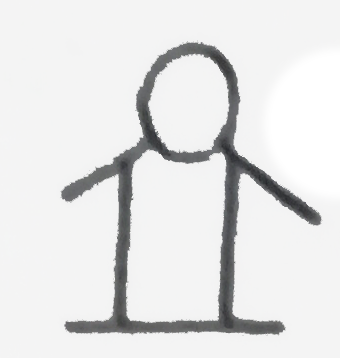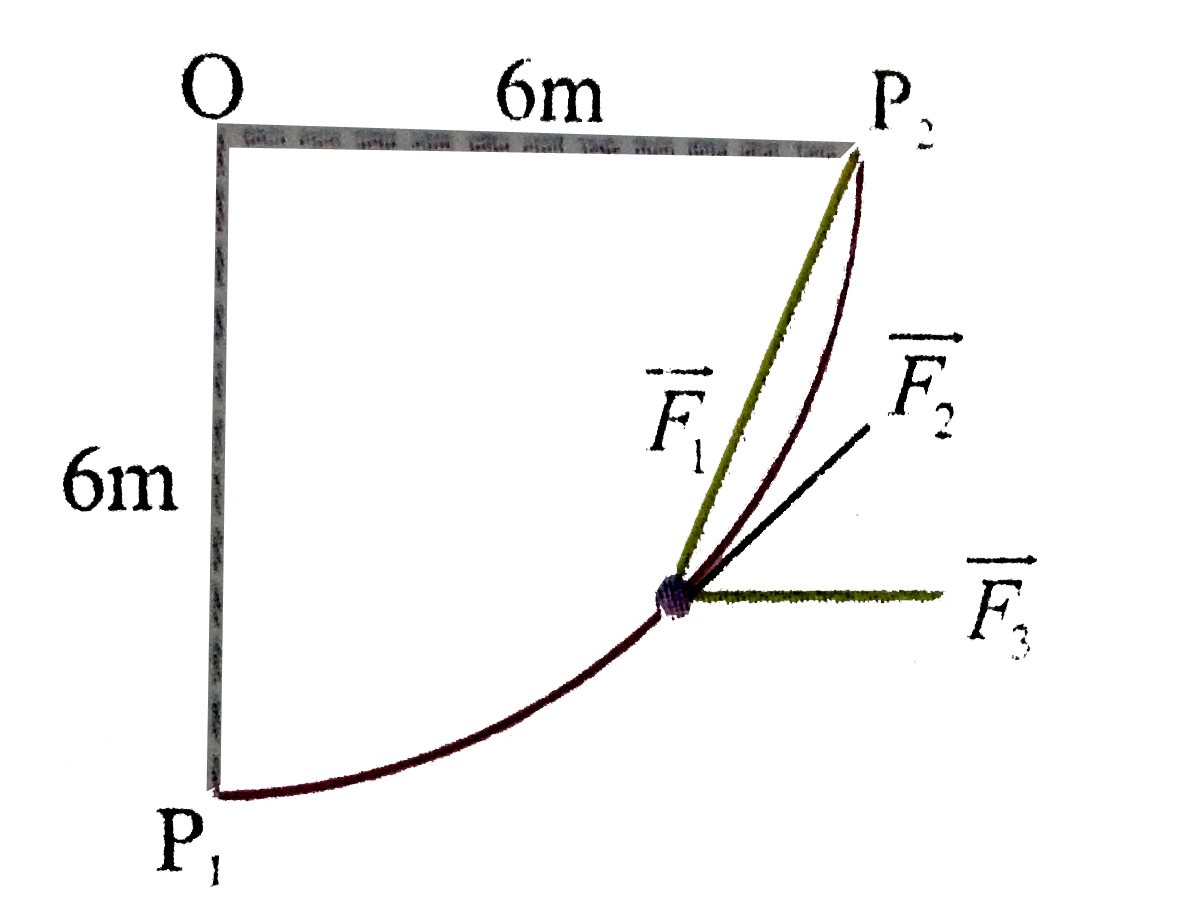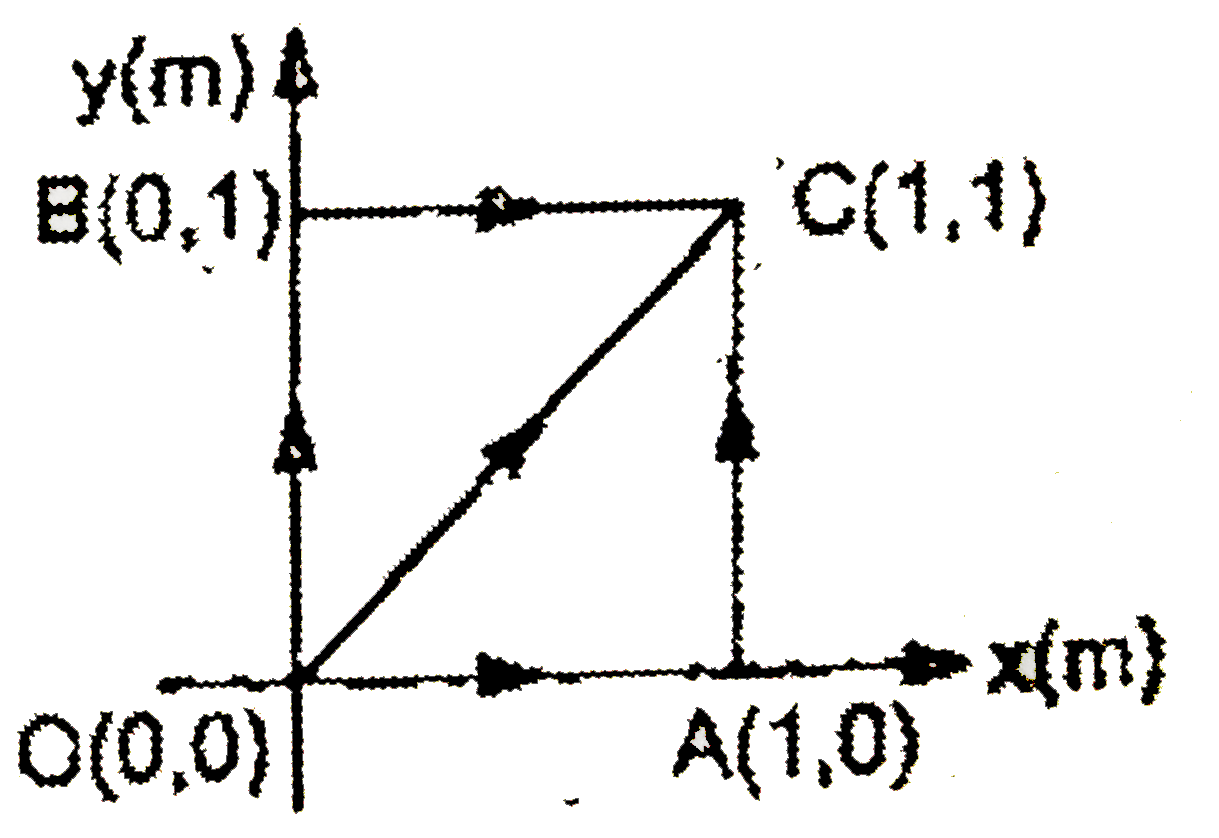Consider the following statements, regarding a girl who wants to jump vertically upward from a hard horizontal floor. Symbolic representation of forces is given below. →FM = force developed in leg muscles, →FW = Weight, →FN = Normal reaction
Total force on floor is →FM+→fw.
Resultant force on girl is (−→FM) while girl is in contact with floor.
Floor exerts a force →FN on girl.
The harder the girl pushes down, the greater the resulting acceleration of girl.
The correct Answer is:C, D
 When the girl is bending her legs, the total force exerted by her legs in the action, normal force by grand is the reaction. Considering FBD of girl
When the girl is bending her legs, the total force exerted by her legs in the action, normal force by grand is the reaction. Considering FBD of girl
→FN+→Fw=m→a
→FN=−→FM
So force on floor is →FM
Resultant force on giel is →Fw−→FM
Note: If we say the change in force of girl is →FM, then (A) and (B) would also be correct.
Topper's Solved these Questions
- MASTER PRACTICE PROBLEMBOOK - BANSALCHAPTER - MASTER PRACTICE PROBLEMEXERCISE - Subjective
107 Videos
- MASTER PRACTICE PROBLEMBOOK - BANSALCHAPTER - MASTER PRACTICE PROBLEMEXERCISE - Additional topic
70 Videos
- MASTER PRACTICE PROBLEMBOOK - BANSALCHAPTER - MASTER PRACTICE PROBLEMEXERCISE - Reasoning
75 Videos
- FLUID MECHANICSBOOK - BANSALCHAPTER - FLUID MECHANICSEXERCISE - PYQS AIEEE
10 Videos
- SEMICONDUCTORSBOOK - BANSALCHAPTER - SEMICONDUCTORSEXERCISE - CBSE Question
32 Videos
Similar Questions
A smooth track is in the form of a quarter circle of radius 10 m lies in the vertical plane. A bead moves from A and B along the circular track under the action of forces →F1,→F2 and →F3 Force →F1 acts always towards point B and is always 20 N in magnitude Force →F2 always acts horizontally and is always 25 N in magnitude. Force →F3 always acts tangentially to the track and is of constant magnitude 10 N. Select the correct answer.

View SolutionSTATEMENT -1 : Net force on a particle w.r.t an inertial frame does notdepend on the velocity of the intertial frame. ,
STATEMENT - 2 : If net force on A is →FA and net force on B is →FB then force on A w.r.t B is (ven(F)A−→FB) .
STATEMENT - 2 : If acceleration of A is →aA and acceleration of B is →aB then, the acceleration of A w.r.t B is (→aA−→aB)
View Solution
Knowledge Check
A smooth track in the form of a quarter circle of radius 6m lies in the vertical plane. A particle moves from P1 to P2 under the action of forces →F1,→F2 and →F3 Force →F1 is 20N, Force →F2 is always 30N in magnitude. Force →F3 always acts tangentiallly to the track and is of magnitude 15N. Select the correct alternative (s) :
 .AWork done by →F1 is 120JBWork done by →F2 is 180JCWork done by →F3 is 45πJD→F1 is conservative in nature.
.AWork done by →F1 is 120JBWork done by →F2 is 180JCWork done by →F3 is 45πJD→F1 is conservative in nature.A smooth track is in the form of a quarter circle of radius 10 m lies in the vertical plane. A bead moves from A and B along the circular track under the action of forces →F1,→F2 and →F3 Force →F1 acts always towards point B and is always 20 N in magnitude Force →F2 always acts horizontally and is always 25 N in magnitude. Force →F3 always acts tangentially to the track and is of constant magnitude 10 N. Select the correct answer.
 AWork done by →F1 is 750 J on the beadBWork done by →F2 is 20 J on the beadCWork done by →F3 is 50πJ on the beadDWork done by →F3 is 100√2Jon the bead
AWork done by →F1 is 750 J on the beadBWork done by →F2 is 20 J on the beadCWork done by →F3 is 50πJ on the beadDWork done by →F3 is 100√2Jon the beadSTATEMENT -1 : Net force on a particle w.r.t an inertial frame does notdepend on the velocity of the intertial frame. ,
STATEMENT - 2 : If net force on A is →FA and net force on B is →FB then force on A w.r.t B is (ven(F)A−→FB) .
STATEMENT - 2 : If acceleration of A is →aA and acceleration of B is →aB then, the acceleration of A w.r.t B is (→aA−→aB)AF T FBT F TCT T FDF T T
A smooth track in the form of a quarter circle of radius 6m lies in the vertical plane. A particle moves from P1 to P2 under the action of forces →F1,→F2 and →F3 Force →F1 is always 30N in magnitude. Force →F3 always acts tangentiallly to the track and is of magnitude 15N. Select the correct alternative (s) :
 .
.
View SolutionHere we find a missing force by using the acceleration. In the overhead view of Fig. 5-4a, a 2.0 kg cookie tin is accelerated at 3.0 m/s2 in the direction shown by →a, over a frictionless horizontal surface. The acceleration is caused by three horizontal forces, only two of which are shown: →F1 of magnitude 10 N and →F2 of magnitude 20 N. What is the third force →F3 in unit-vector notation and in magnitude-angle notation?
View SolutionA force acting on a certain particle depends of the particles position in the xy-plane. This force F is given by the expression
→F=(xyˆi+xyˆj)(1N/m2)
where x and y are expressed in metre. If →F is a conservation force ?

View SolutionConsider a force acting on a particle given as →F=yˆi+xˆj , where ( x, y ) is the instantaneous location of the particle. This type of force is :
View SolutionAB is a quarter of a smooth horizontal circular track of radius R,A particle P of mass m moves along the track from A to B under the action of following forces:

−→F1=F (always towards y-axis)
−→F2=F (always towards point B)
−→F3=F (always along the tangent to path AB)
−→F4=F (always towards x-axis)
ColumnI ColumnII(A)Work done by−→F1 (P)√2FR(B)Work done by−→F3 (Q)FR(C)Work done by−→F3 (R)πFR2(D)Work done by−→F4 (S)2FRπ
Select correct alternative :-
View Solution
